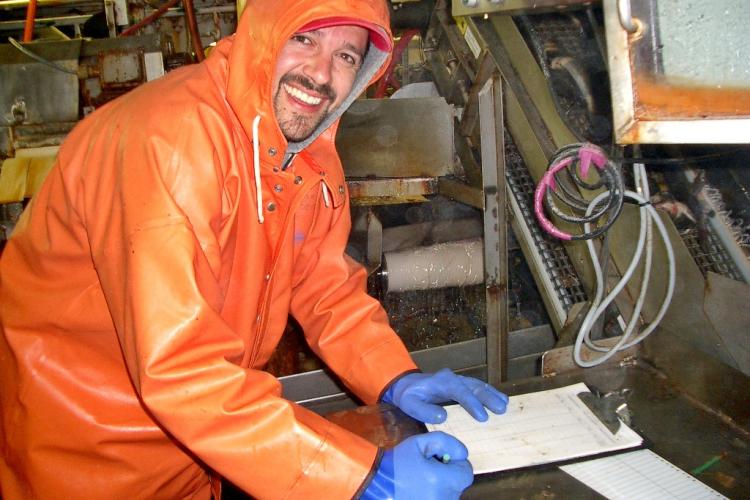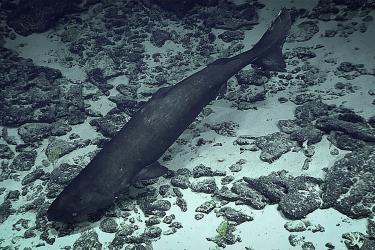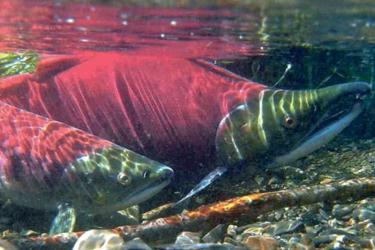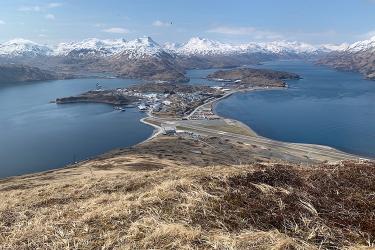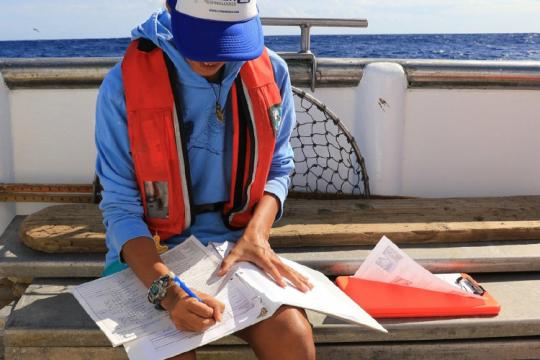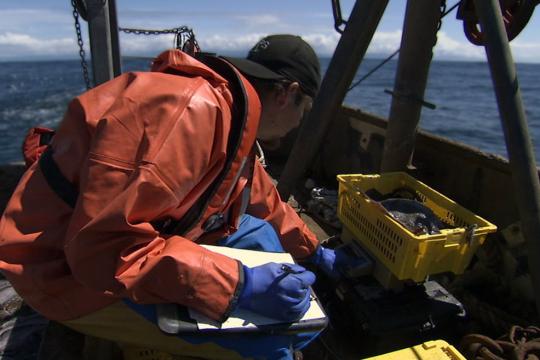Job Training
Training to become a certified observer consists of a comprehensive three week program held in Seattle. The curriculum includes safety while at sea, sampling methodologies, species identification, and data documentation requirements. It also provides information regarding fisheries management, pertinent fishing regulations, and life as an observer. Attendance, full participation in exercises, and a passing score on exams are necessary to successfully complete the classroom portion. In addition, trainees must be able to don an immersion suit in less than one minute and enter the water and climb into a floating life raft while wearing the suit.
Life as an Observer
Working as an observer is adventurous and rewarding. Observers have the opportunity to experience life at sea and the beautiful scenery of coastal Alaska. The work is physically and mentally demanding. Rough seas are common, bouts of seasickness can be uncomfortable, and the environment can be cold and wet. Limited onboard space makes living and working conditions relatively cramped. Most trips last from one day to a couple of weeks, although some vessels go to sea for several weeks. Many vessels fish 24 hours a day, resulting in erratic and unpredictable work periods and irregular sleeping schedules. Daily activities may include heavy lifting (up to 80 lbs), climbing ladders, and working on rolling, slippery decks. There may be minimal access to phones, computers and mail. In the event of an emergency, advanced medical assistance may not be readily available. Observers can take pride in the knowledge that their work is essential to effective fisheries management in the North Pacific.
Observer Duties
- Record fishing effort, location, and total catch information
- Sample to determine the species composition of catches
- Collect biological information such as size frequencies and sex ratios
- Collect biological samples
- Monitor for and document compliance with fishing regulations
- Record incidental takes and interactions of marine mammals and seabirds with fishing gear and vessels
- Maintain a detailed logbook of sampling activities
- Complete a post-cruise debriefing
Standard Requirements
- Employment by a permitted observer provider or contractor
- Bachelor's degree in natural sciences
- Thirty semester hours or equivalent in applicable biological sciences with extensive use of dichotomous keys in at least one course
- One college-level course each in math and statistics
- No limitations that will interfere with performance of duties
- Competent computer skills
Additional Resources
Observers
- North Pacific Observer Duties
- North Pacific Observer Program Training & Briefing
- North Pacific Observer Program Training Schedule
- North Pacific Observer Program Permitted Providers
- North Pacific Observer Pre-Class Reading Material
- North Pacific Observer Sampling Manual
- What is a North Pacific Groundfish and Halibut Observer Brochure
- Spatial Data Collected by Groundfish Observers in Alaska
- Alaska Groundfish Fishery Observer Data Map
- North Pacific Observer Resources
Vessels/Processors
- North Pacific Electronic Monitoring
- North Pacific Observer Program Annual Deployment Plans
- North Pacific Observer Program Annual Reports
- North Pacific Observer Vessel / Plant Operator FAQ
- North Pacific Observer Vessel / Plant Operator Comment Form
- Observer Deploy and Declare System (ODDS)
- Observer Fee Collection and Payment
- Observer Harassment Warning (PDF)
- North Pacific Observer Program Federal Register - Rules and Notices
- North Pacific Observer Program FMP Amendments - Rules and Notices
- Regulatory Analyses
